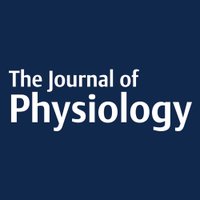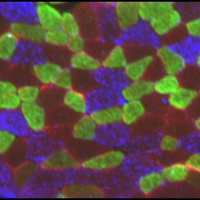
3MAP Lab
@3maplab
Strengthening our Veterans through rehabilitation research! | Prof. Harris-Love & Co. study muscle & function at the DC VAMC and Rocky Mountain Regional VAMC.
ID: 3296552157
http://www.3map-lab.com/ 24-05-2015 14:20:50
3,3K Tweet
686 Followers
721 Following





Slow loading (e.g via isometrics) allow the weaker parts of the tendon to get an anabolic stimulus. Mechanistically, this suggests that slower, lower intensity loading in addition to dynamic loading can optimise tendon function. via K Tam & Keith Baar sciencedirect.com/science/articl…


Bridging the gap between research and clinical practice! 🩺 The RESTORE Team presented on using implementation science to empower clinicians and researchers at #APTACSM. 👏Thanks to all for the exciting discussions on translating evidence into action! American Physical Therapy Association (APTA)



Please check out our new review with Tyler Churchward-Venne Muscle Health: What are the potential mechanisms of fatigue-induced skeletal muscle hypertrophy with low-load resistance exercise training? | AJP-Cell Physiology journals.physiology.org/doi/full/10.11…

🔬 We are recruiting a post-doc fellow to join #3maplab at CU Anschutz Medical Campus & VA Eastern Colorado Health Care System in support of our VA BLRD & CSRD Collaborative Merit Review Award study re: intrinsic capacity + post-hospitalization muscle atrophy💪 📢For more info lnkd.in/gdu6T3v7 #sarcopenia | #aging


Happy reading, by Gustavo Duque Giovanni Lombardi and I. UniMelb MDHS Bone and muscle crosstalk in ageing and disease | Nature Reviews Endocrinology nature.com/articles/s4157…

Out in this month's issue of Aging Cell. Motor neurons do better in the presence of primary human muscle cells from older exercisers vs non-exercisers 🙏Lundbeckfonden for the Ascending Investigator grant 4 years ago to see this work through doi.org/10.1111/acel.1…


Bie et al. Nature Communications showcase a groundbreaking in vivo imaging technique for glycogen measurement in human muscle, highlighting its potential to unveil complex glycogen kinetics. This advancement offers acurate insights into muscle recovery processes! nature.com/articles/s4146…

Research Article by B Bizet et al (Nantes Université Sylvain Dorel Cuba Guy Ricardo J. Andrade) Eight weeks of eccentric training at long-muscle length increases fascicle length independently of adaptations in passive mechanical properties 🔓ow.ly/UF6r50VrAWs


Our most comprehensive review ever! With twiterless Amira Klip and Philip Bilan. #nexs A Comprehensive View of Muscle Glucose Uptake: Regulation by Insulin, Contractile Activity and Exercise | Physiological Reviews | American Physiological Society journals.physiology.org/doi/abs/10.115…



Women experience faster, earlier muscle decline with age. New data from Steven O'Bryan and co. in women aged 18–80 found the steepest declines begin in the 4th decade, around menopause. Why sex-specific research matters - as does tailored strategies to help women age stronger.










